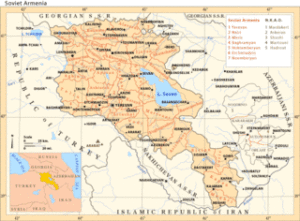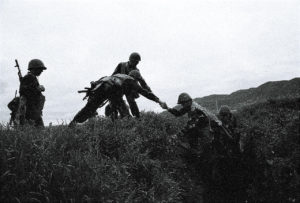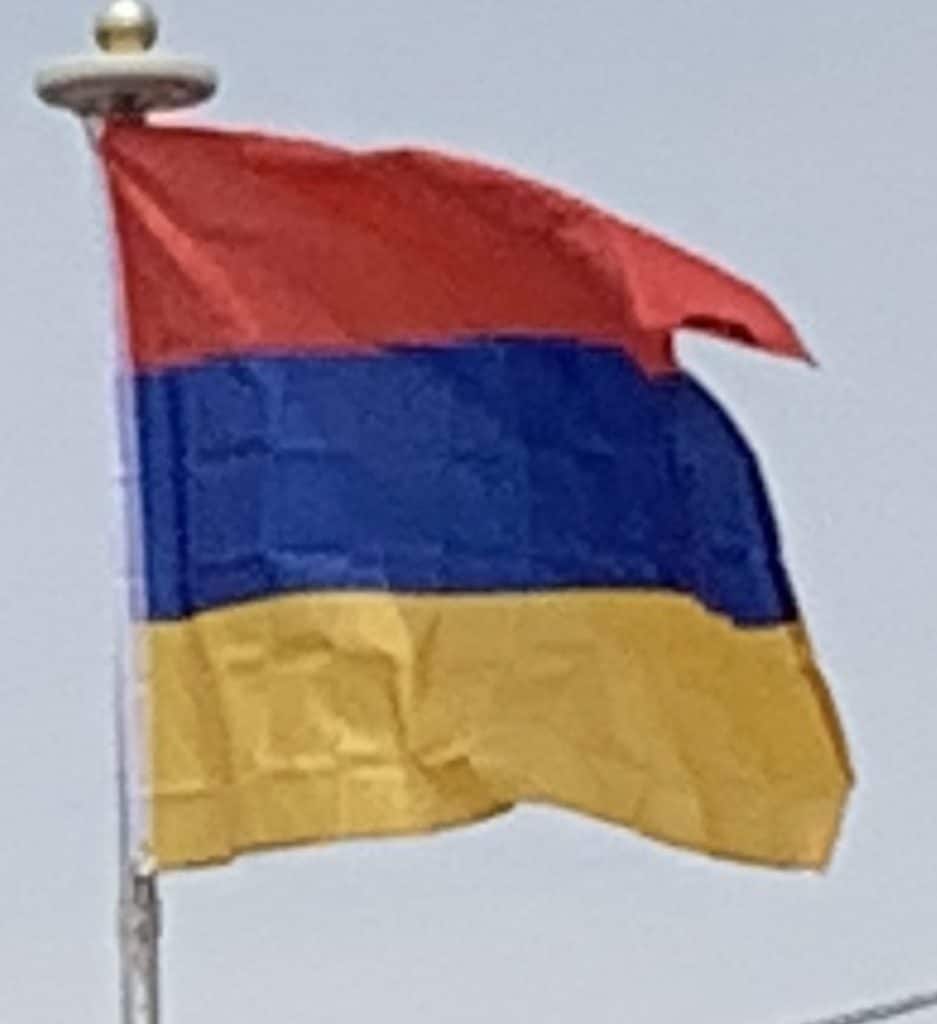
During the Gorbachev era of the 1980s, with the reforms of Glasnost and Perestroika, Armenians began to demand better environmental care for their country, opposing the pollution that Soviet-built factories brought. Tensions also developed between Soviet Azerbaijan and its autonomous district of Nagorno-Karabakh, a majority-Armenian region. About 484,000 Armenians lived in Azerbaijan in 1970. The Armenians of Karabakh demanded unification with Soviet Armenia. Peaceful protests in Yerevan supporting the Karabakh Armenians were met with anti-Armenian pogroms in the Azerbaijani city of Sumgait. Compounding Armenia’s problems was a devastating earthquake in 1988 with a moment magnitude of 7.2.
Gorbachev’s inability to alleviate any of Armenia’s problems created disillusionment among the Armenians and fed a growing hunger for independence. In May 1990, the New Armenian Army (NAA) was established, serving as a defense force separate from the Soviet Red Army. Clashes soon broke out between the NAA and Soviet Internal Security Forces (MVD) troops based in Yerevan when Armenians decided to commemorate the establishment of the 1918 First Republic of Armenia. The violence resulted in the deaths of five Armenians killed in a shootout with the MVD at the railway station. Witnesses there claimed that the MVD used excessive force and that they had instigated the fighting.
Further firefights between Armenian militiamen and Soviet troops occurred in Sovetashen, near the capital and resulted in the deaths of over 26 people, mostly Armenians. The pogrom of Armenians in Baku in January 1990 forced almost all of the 200,000 Armenians in the Azerbaijani capital Baku to flee to Armenia. On 23 August 1990, Armenia declared its sovereignty on its territory. On 17 March 1991, Armenia, along with the Baltic states, Georgia and Moldova, boycotted a nationwide referendum in which 78% of all voters voted for the retention of the Soviet Union in a reformed form.
Restoration of Independence:
On 21 September 1991, Armenia officially declared its independence after the failed August coup in Moscow. Levon Ter-Petrosyan was popularly elected the first President of the newly independent Republic of Armenia on 16 October 1991. He had risen to prominence by leading the Karabakh movement for the unification of the Armenian-populated Nagorno-Karabakh. On 26 December 1991, the Soviet Union ceased to exist and Armenia’s independence was recognised.
Ter-Petrosyan led Armenia alongside Defense Minister Vazgen Sargsyan through the Nagorno-Karabakh War with neighbouring Azerbaijan. The initial post-Soviet years were marred by economic difficulties, which had their roots early in the Karabakh conflict when the Azerbaijani Popular Front managed to pressure the Azerbaijan SSR to instigate a railway and air blockade against Armenia. This move effectively crippled Armenia’s economy as 85% of its cargo and goods arrived through rail traffic. In 1993, Turkey joined the blockade against Armenia in support of Azerbaijan.

The Karabakh war ended after a Russian-brokered cease-fire was put in place in 1994. The war was a success for the Karabakh Armenian forces who managed to capture 16% of Azerbaijan’s internationally recognised territory including Nagorno-Karabakh itself. Since then, Armenia and Azerbaijan have held peace talks, mediated by the Organisation for Security and Co-operation in Europe (OSCE). The status of Karabakh has yet to be determined. The economies of both countries have been hurt in the absence of a complete resolution and Armenia’s borders with Turkey and Azerbaijan remain closed. By the time both Azerbaijan and Armenia had finally agreed to a ceasefire in 1994, an estimated 30,000 people had been killed and over a million had been displaced.
